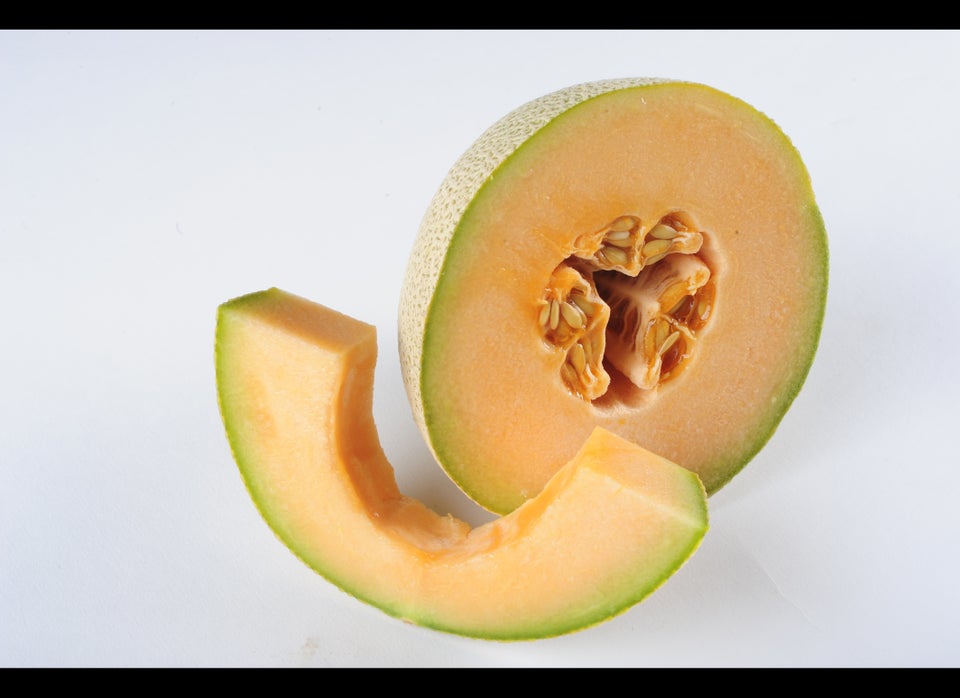Physical prowess and aesthetics are constantly shifting from the day one is born until the day one dies. Children often bemoan waiting to grow up, and at some point adults begin to dig in their heels and attempt to freeze the process. Aesthetics are at the root of America's anti-aging myth. The myth that by maintaining a certain physical appearance one can stop the aging process. Striving for and clinging to an ideal physical appearance is pervasive in American culture. How does this myth exist when every single day of one's life our appearance is shifting, we are aging? What if this shifting was not seen as growth OR deterioration? What if this shifting was accepted without judgment? What if this shifting was simply witnessed without an attempt to control? The process of aging is universal; the lived qualities of it are unique to the individual. This uniqueness offers us a chance to appreciate the aging process artfully.
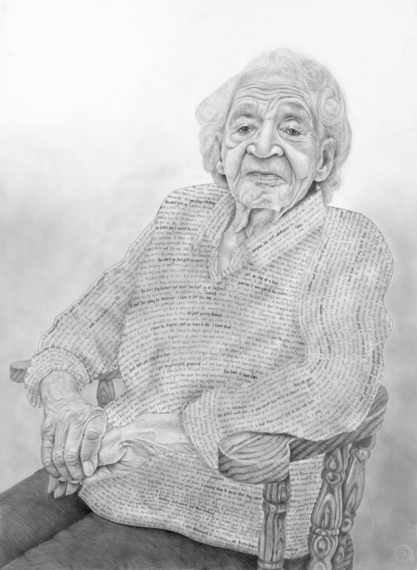
Ora by Claudia Biçen thoughtsinpassing.com
It is not simply that our physical and even mental abilities as well as our hold on life are dwindling; though that is indeed the case, something else is developing in concert with these losses. . . . The body forces on us a kind of maturity, a settling down into a grounded encounter with reality, and, if we are paying attention, of limited potential. -- Jungian Analyst Cynde Rothe
Aging shifts our aesthetic. If this shift can be embraced -- or dare I say valued -- we can develop an acceptance of our own process and an appreciation for those who have gone through it before. We are good at this in childhood: we look to those older than us and see when they grew and wonder when our growth spurt will come, we anxiously await the changes puberty will bring. I propose that this same wonder and curiosity can be used throughout our life.
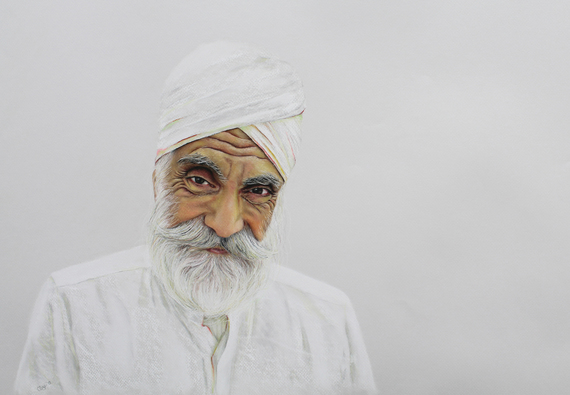
Gurmeet by Claudia Biçen claudiabicen.com
I expose the illusion that youth is perfect. Youth is beautiful in many ways, but it's not perfect. The problem with thinking youth is perfect is that everything that follows must therefore be in decline. It's dangerous to let go of what's familiar, to let go of what you've always done, to choose to do something new that you might or might not succeed at. We grow and change and develop across the entire lifespan, not just when we are young. -- Dr. Bill Thomas
I have tried to embody this concept with an experiment on myself. When I became involved in the fight against ageism I did not yet have my first gray hair. I decided to try to shift my perspective and to view gray hair the way I had awaited the changes in puberty, and as with my own puberty, I had to wait longer than most of my peers for this change. Just a few weeks ago I noticed my first gray and some of its friends near my hairline. I was pleased to notice that my internal dialogue was much the same as it was in reaction to physical changes I experienced earlier in life. I looked at it, noticed the difference in texture from my other hairs, how it glistened silver. I am curious how fast I will go gray and in what pattern. No part of me wanted to pluck or dye these sweet early messengers of elderhood. I look forward to the honor of being a crone and these little hairs are the first physical manifestation of my journey. I am not trying to Pollyanna the aging process. Life is hard and fraught with suffering. I am arguing that we do not need to add to that suffering by judging ourselves for aging or believing that we can only be beautiful for a few years of our lives.
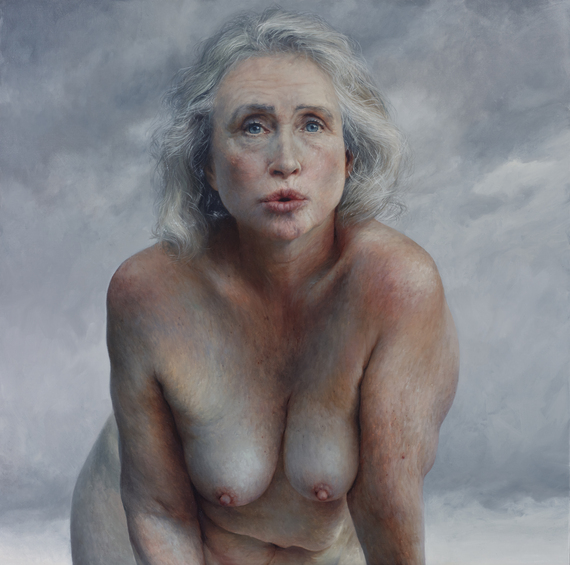
Zephyr by Aleah Chapin aleahchapin.com
The key to aging with grace and comfort is finding that internal dialogue that encourages you as you would encourage a good friend and makes you feel like attractiveness isn't about having every feature look the same as it did years ago. It's about focusing on the whole gestalt--your presentation of yourself, your smile, your engaging eyes, a strong stride. That goes along with a dialogue that says, "Life requires a constant adjusting." -- Ex-model and Psychologist Vivian Diller
What if our culture did not see the shifting aesthetics after early adulthood as a move toward obsolescence? Psychologist James Hillman elaborated on this idea by saying, "Perhaps uselessness needs to be regarded aesthetically [emphasis added]. . . . The old become strikingly memorable, ancestral representations, characters in the play of civilization, each a unique, irreplaceable figure of value. Aging: an art form?" To turn this type of appreciation back on one's own life (or that of a loved one), to view one's character as her or his own personal masterpiece of soul art is a significant act of caring for soul.
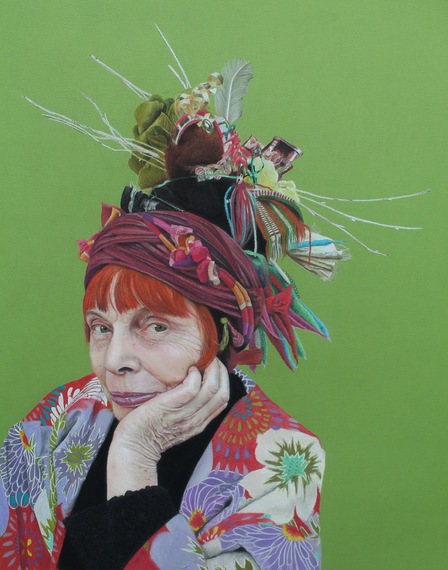
Raga by Claudia Biçen claudiabicen.com
This year on Bill Thomas' Age of Disruption Tour the lobby will be a place where you can P.L.A.Y. Life's Most Dangerous Game with interactive stations. The A of P.L.A.Y stands for Aesthetics and is exactly what we are discussing here. So do you wanna play?
Here is what you do:
1. Take a selfie. Notice I said a (singular) selfie, not 10. Just one photo to capture you in this moment.
2. Look at the photo. What is the first thing you notice? It is probably a flaw and that is okay, we have been conditioned to notice flaws first. Do not judge yourself by this first impression. Let that thought of flaw float away like a cloud on a breezy day.
3. Pretend you are in a museum looking at art and look at that photo again. What can you appreciate about it now? Look at the whole image. What emotion does it convey? What can be known about you from looking at it? Look at it through the eyes of someone who loves you. What can you appreciate artfully about yourself? Still having trouble? Look at the images in this post, there are unequivocally art and depict subjects generations older than cultural standards of beauty. Can you appreciate them artfully? Take those same eyes and look at your selfie again.
4. Help change the cultural perception of aging. Post your selfie to social media and use the comment "I posted this photo because #AgingIsAnArtForm " along with what you appreciated artfully about the photo. You can find other people who took the challenge by looking up the hashtag.
Change takes time and change takes people. By posting this photo you are changing aging and P.L.A.Y.ing Life's Most Dangerous Game.
*Disclosure: Author is the lobby curator for the Age of Disruption Tour
Earlier on Huff/Post50:

